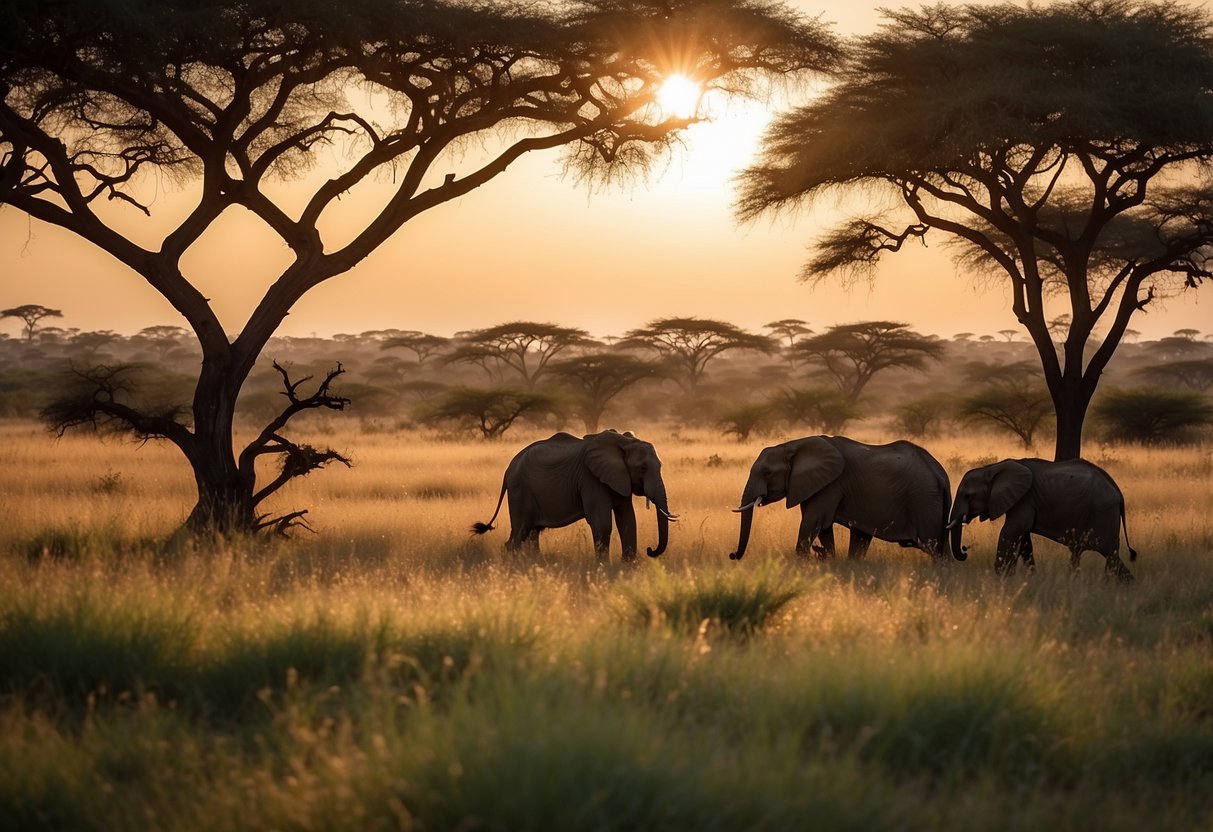
Health and Wellbeing on Safari
Maintaining good health during your safari is essential for a safe and enjoyable trip. Adequate vaccinations, medications, insect repellents, and sunscreen are crucial to protecting oneself from potential risks in the Serengeti.
Vaccinations and Medications
Ensuring that all necessary vaccinations are up to date is a priority before embarking on a safari. Commonly recommended vaccinations include Hepatitis A and B, Typhoid, Yellow Fever, and Tetanus. Malaria prophylaxis is also highly recommended due to the prevalence of malaria-carrying mosquitoes in the region.
Carrying essential medications such as antimalarials, prescription drugs, and a basic first aid kit is advisable. These kits should contain pain relievers, antihistamines, and any personal medicines. Travelers should also bring medications for treating common ailments like traveler’s diarrhea. Consulting a healthcare provider well in advance helps in obtaining the correct medications and understanding their usage.
Dealing with Insects and Sun Exposure
The Serengeti is home to numerous insects, including mosquitoes. Effective mosquito repellent is necessary to prevent bites, which can transmit diseases like malaria. Wearing long sleeves and pants, especially during dawn and dusk, adds an extra layer of protection.
Sun exposure in the Serengeti can be intense. Applying broad-spectrum sunscreen with a high SPF, and reapplying it frequently, helps to prevent sunburn. Wearing wide-brimmed hats and sunglasses can provide additional protection against harmful UV rays. Staying hydrated and seeking shade during peak sun hours ensures that travelers remain comfortable and safe in the African sun.
Serengeti for Photography Enthusiasts
The Serengeti offers myriad opportunities for photographers, with its stunning landscapes and diverse wildlife. Understanding when and where to capture these natural wonders is key to a successful photographic safari.
Capturing the Natural Phenomenon
Photographing the Serengeti’s natural phenomena, such as the Great Migration, requires precise timing. The migration sees over a million wildebeest, along with hundreds of thousands of zebras and gazelles, journey across the savanna. This spectacle typically occurs between July and October when animals cross the Mara River, creating dramatic and captivating scenes.
In the rainy season, the landscape transforms with lush greenery and blooming wildflowers. This period offers vibrant backdrops for photography. The interaction between wildlife and these dynamic environments can make for captivating shots. Early morning and late afternoon light enhances the textures and colors, providing ideal conditions for photography.
Capturing these moments often requires patience and a good telephoto lens to get those intimate wildlife shots. Guides can help position photographers in the best spots. It’s also important to respect animal boundaries and maintain a safe distance.
Best Spots for Game Viewing
In the Serengeti, certain locations are renowned for their exceptional game viewing. The Seronera Valley, in the central Serengeti, is abundant with wildlife year-round, including leopards, lions, and cheetahs. The Grumeti River region is another hotspot, particularly during the migration, as it attracts large crocodiles and hippos.
The Southern Serengeti, especially the Ndutu area, is a prime location from December to March. Here, during the calving season, tens of thousands of young wildebeests are born, and predators are often seen in action. This period provides opportunities for capturing dramatic interactions between predators and prey.
The Western Corridor is rich with varied terrain such as forests, rivers, and plains. Its diverse habitats make it an excellent location for diverse wildlife photography. Each region’s unique terrain and resident species ensure that photographers can capture a wide array of nature’s wonders in the Serengeti.